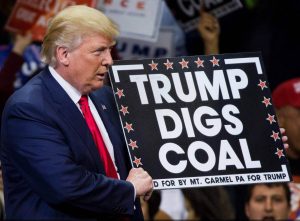Auto and Energy Innovation Hearken 3rd Industrial Revolution?
 The tie between autos, the future of energy, and perhaps even the fate of the world are more intense that one may realize. While the energy efficient automobile has the potential be the domino that begins an energy revolution, there are those who are resisting change and making the transition from carbon fuels that much harder.
The tie between autos, the future of energy, and perhaps even the fate of the world are more intense that one may realize. While the energy efficient automobile has the potential be the domino that begins an energy revolution, there are those who are resisting change and making the transition from carbon fuels that much harder.
Nevertheless, all it takes is a look at headlines all around the world to realize that traditional energy is on the way out, and that clean energy is quickly becoming the new norm. Electric cars are becoming pretty affordable, with the cheapest in 2017 leaving the lot for right around $23,000 (Mitsubishi i-MiEV), albeit at a significant distance disadvantage (62 miles highway per charge). Electric cars sales rose by 37% in the US in 2016, and have reached a record high in the UK, even though they still only make up 4.2 percent of new vehicles. Indeed, the argument could be made that electric cars are cheaper than regular autos, as long as you make sure your vehicle’s battery is under warranty, and that you add in your federal tax credit.
American drivers are even intrigued enough to be equipping traditionally gas-guzzling trucks like the Ford F-150 with green aftermarket solutions such as cat-back exhausts, and, even though Snopes and others have debunked the notion that you can run your car on water, the fact that so many are interested in the notion is promising.
Ultimate Efficiency: Self-Driving Vehicles
Vice recently ran an article called “How Self-Driving Cars Are Ushering in the Third Industrial Revolution,†which basically sums up the arguments from a book by the same name, written by economist Jeremy Rifkin. Rifkin argues that the carbon-based energy must die within the next forty years if the human race has any chance for continued survival on this planet–initiatives which the US is extremely far behind in embracing, at least compared to China and Germany.
The article states that Rifkin served as a special advisor to German Chancellor Angela Merkel, perhaps giving him the evidence he needed to make the claim that Germany is the world leader in ushering in this Third Industrial Revolution. Nevertheless, “solar and wind now power 32 percent of Germany’s electricity, and the country is aiming to be on 100 percent renewable power by 2040.â€
The article goes on to exemplify the automobile’s place in a green, global future:
Currently, metropolitan areas contribute  70 percent of global greenhouse gas emissions, and it’s predicted that the number of cities in the world will double by 2050. Last year, Paris experienced its worst pollution peak in a decade, forcing Mayor Anne Hidalgo to introduce alternate traffic measures. Oslo plans to ban cars from its city center by 2019. But Simon Tricker, founder of Urban Tide—a smart city initiative based in the UK—says that if self-driving electric cars become commonplace by 2030, cities will be able to reduce their emissions by 90 percent without impairing the quality of life of their inhabitants.
In the US, Ford has taken the smart city initiative personally with its Chariot program. The VICE article even quotes Ford’s executive chairman, William Clay Ford, as having asserted that “autonomous vehicles will be on the roads and running, and this will give us back green space in our cities.â€
Of course, this vision of the future requires a huge change in infrastructure, one that accommodates both renewable energy and the smart city that will consume it. However, the EPA’s very existence may be threatened by a seemingly pro-carbon Trump administration.
The blunder is that the Trump administration’s misguided short-game is aimed at keeping jobs and money in the carbon energy sector, when, in reality, renewable energy is creating jobs 12 times faster than the rest of the US economy, according to a new report by the Environmental Defense Fund’s (EDF) Climate Corps program.
Hopefully, a rogue administration doesn’t squash the US industry and economy’s chance to join the Third Industrial Revolution, but only time — and the first public impressions of self-driving smart-cars will tell.
image credit: the rural blog
Wait! Before you go…
Choose how you want the latest innovation content delivered to you:
- Daily — RSS Feed — Email — Twitter — Facebook — Linkedin Today
- Weekly — Email Newsletter — Free Magazine — Linkedin Group
 Andrew Heikkila, a tech enthusiast, and writer from Boise, Idaho, and a frequent contributor to Innovation Excellence. He also writes for Tech Crunch. You can follow him @AndyO_TheHammer
Andrew Heikkila, a tech enthusiast, and writer from Boise, Idaho, and a frequent contributor to Innovation Excellence. He also writes for Tech Crunch. You can follow him @AndyO_TheHammer
NEVER MISS ANOTHER NEWSLETTER!
LATEST BLOGS
Three things you didn’t know about credit cards
Photo by Ales Nesetril on Unsplash Many of us use credit cards regularly. From using them for everyday purchases to…
Read MoreFive CV skills of a business-minded individual
Photo by Scott Graham on Unsplash The skills listed on a CV help employers quickly understand your suitability for a…
Read More


